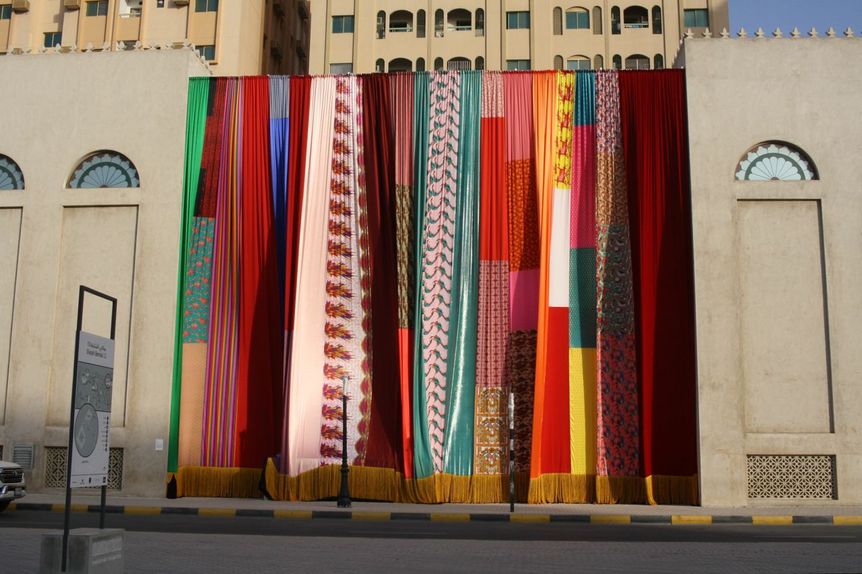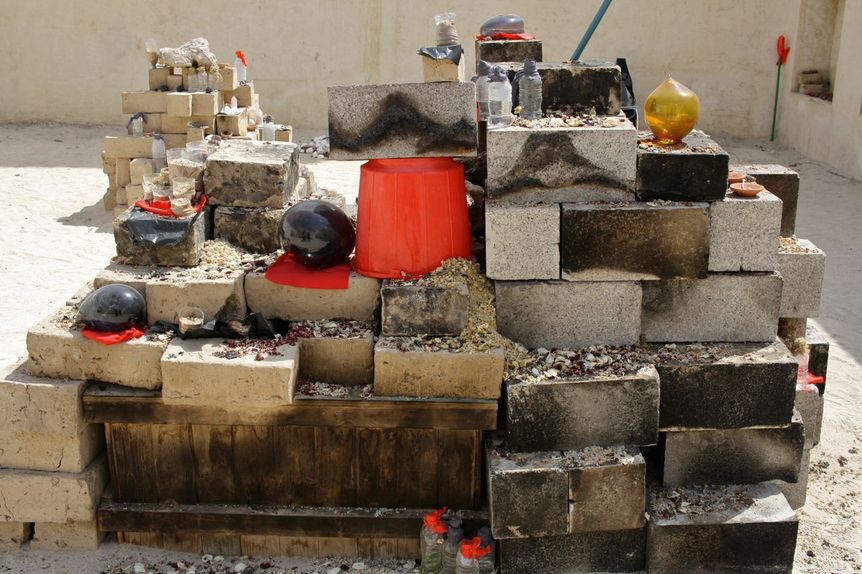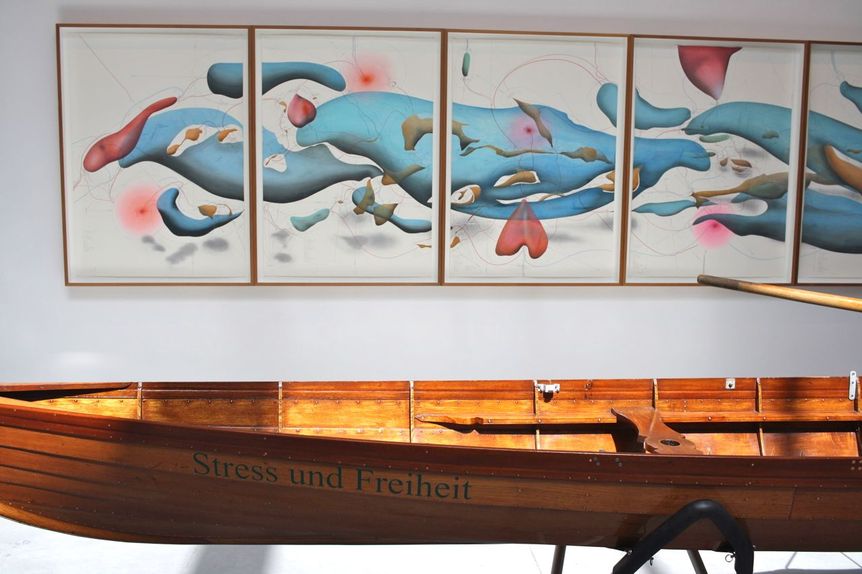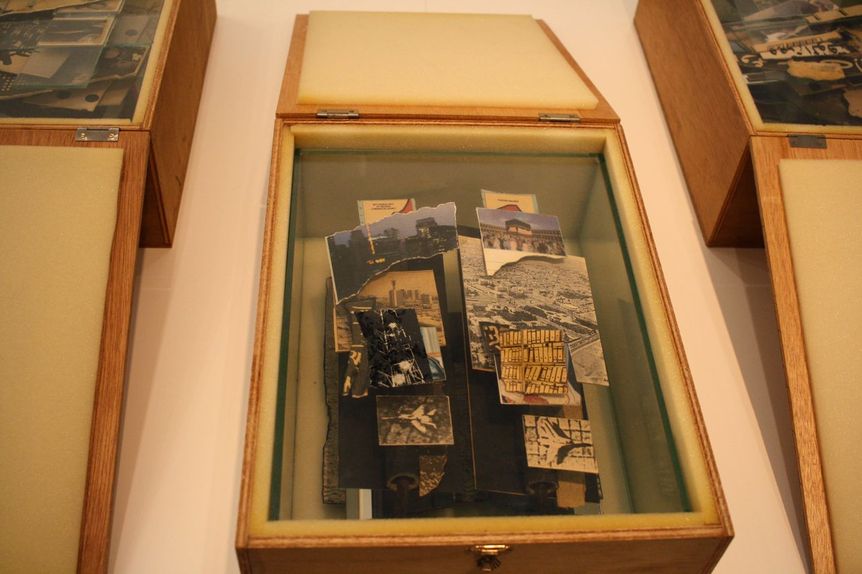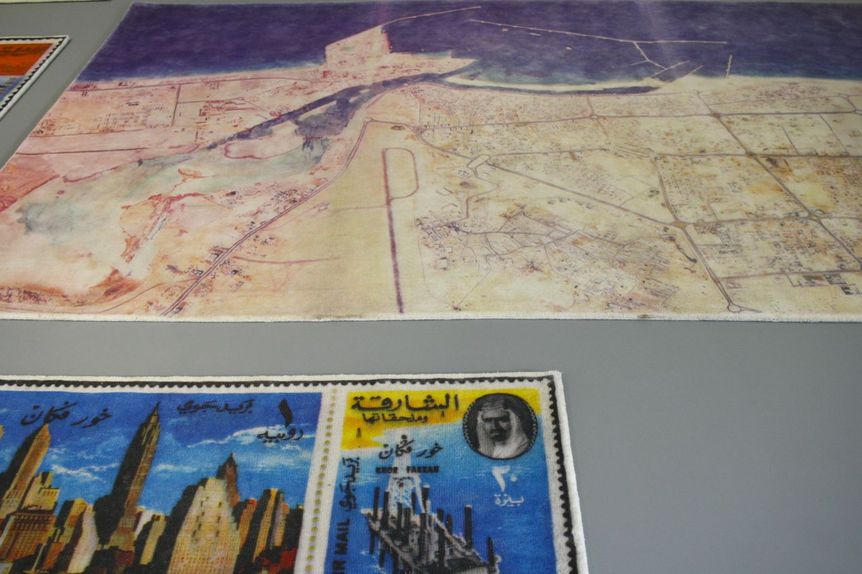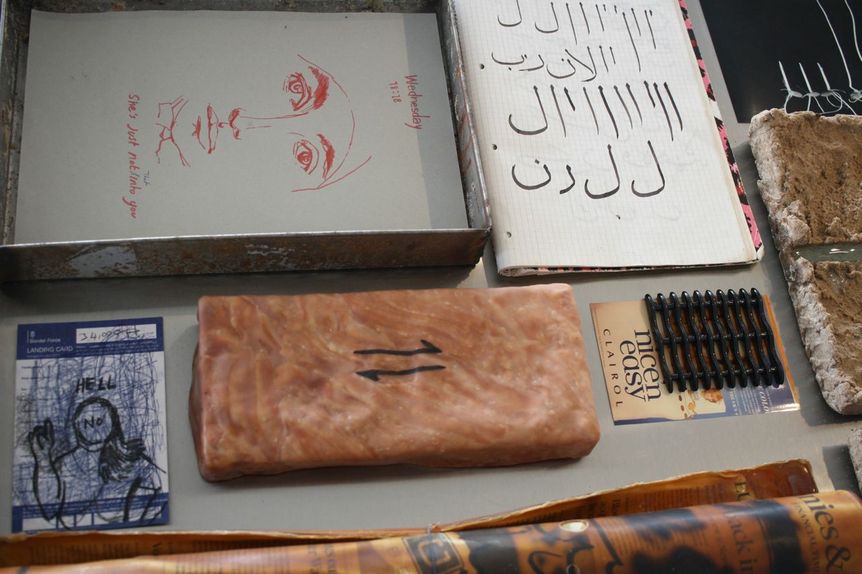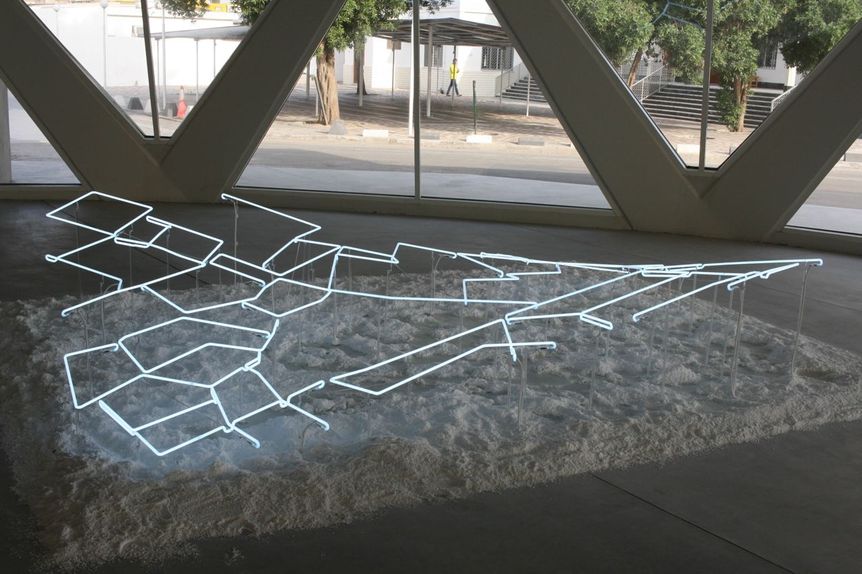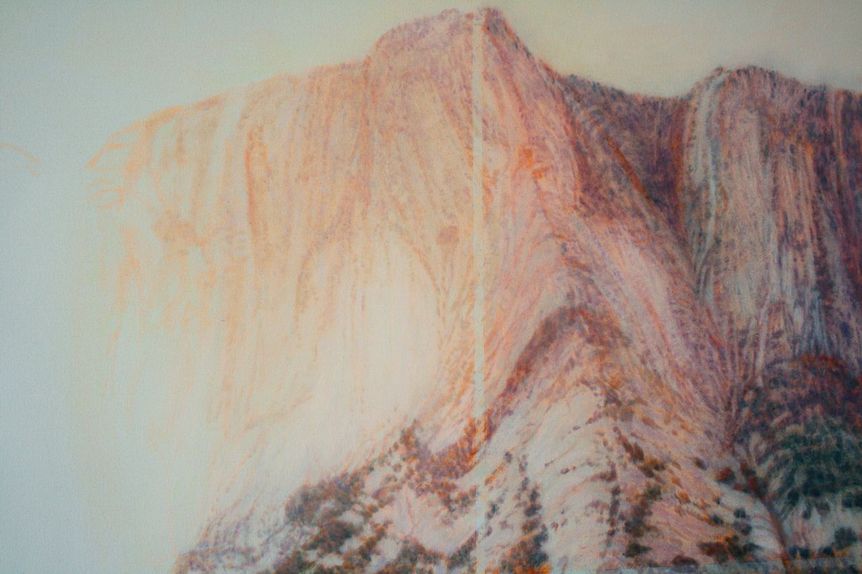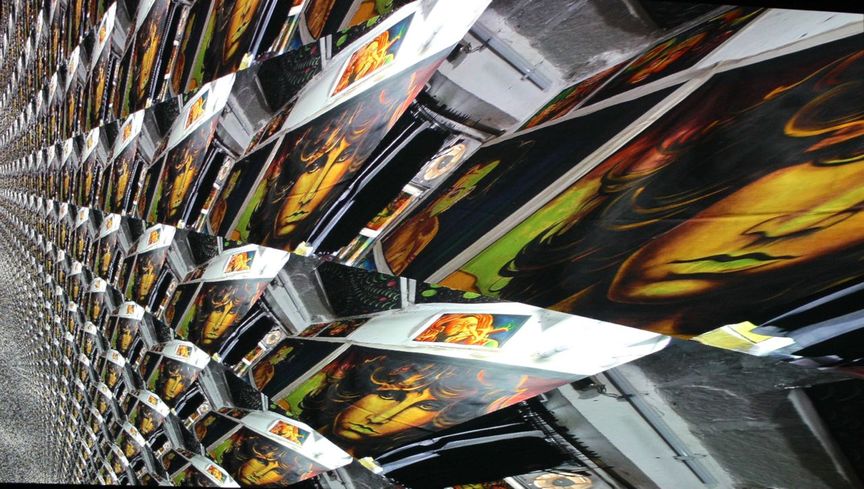How could I not mention the Flying Saucer? Built in the late 1970s and a takeaway fried chicken restaurant (among other things) until it was utilized by the Sharjah Art Foundation for the 2015 Biennial, the domed interior has been modified and expanded for exhibitions since then (and the fried-chicken signage removed from the roof). While it was unclear what linked the seven artists’s projects here, my sense was that they all had some element of visual distortion. Daniele Genadry’s three landscape paintings in washed out colors—Light Fall, Lakelightand Blind Light (all 2017)—refer to stereoscopic imagery and early photographic attempts to create an immersive visual experience, and made the liquid component of photography and painting feel present in her partial, faded erasure of the mountain scenes. Mandy el-Sayegh’s installation, Boundary Work (2017), of two metal tabletops filled with objects coated in what looked like layers of latex, seemed to be an effort to preserve objects, and thus moments, in time, mirroring her own father’s daily calligraphic practice. Deniz Gül’s works were similarly about transformation: a bathroom sink rendered in a mute black polyurethane foam; a zigzagging neon suspended above a bed of powered sugar that looks like a city seen the air, and a garden hose rendered in plaster. Roy Samaha’s diaristic video Residue (2017) is made up of 85 GIFs from a trip from Beirut to İzmir (Turkey) and then to Mytilene on the Greek island of Lesbos. The GIFs playing forward and backward, mimicking the back-and-forth migrations of populations in the Aegean region, from ancient times to the present. A deconstructed smart phone, presented in a plexiglass case, like an archeological display, recalled the “tool” used by refugees today, guiding them out of Syria through Turkey to Greece and beyond. A video by Mochu, Machinic Elixir – Improvisation Two (2017) took viewers on another trans-temporal voyage, following spiritual trails forged by the 1960s counterculture through India and capturing the strange residues of hippie culture (shops filled with icon-like canvases of Jim Morrison, for example) which Mochu renders with obviously hokey visual distortions, linking the legacy of psychedelic and digital effects with the dubious search for spiritual epiphanies. It goes to a territory when post-internet aesthetics meets techno-utopianism of an earlier generation—appropriate enough for a building with a star-shaped crown, mosque-like interior dome, and brutalist concrete forms. At the Flying Saucer the "tamawuj" effect—of waves and undulations—achieved its most poetic coherence as the Biennial’s metaphor, where points on a wave (the rising and falling) connect with others points on successive waves across time and undulation. About the many still-unconnected threads from Sharjah Biennial 13, I’ll have more to say throughout the rest of the year, as the program continues in Istanbul (May 13), Ramallah (August 10) and in Beirut in mid-October.
HG Masters is editor-at-large of ArtAsiaPacific.
